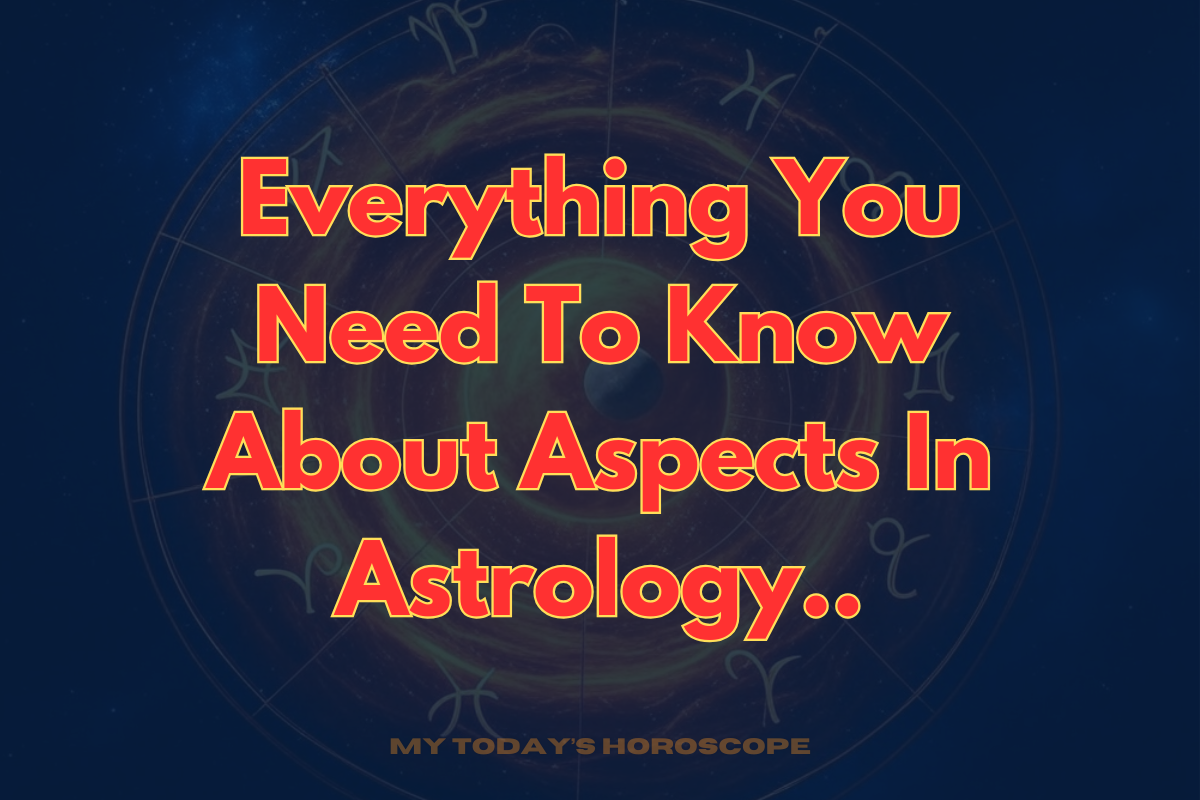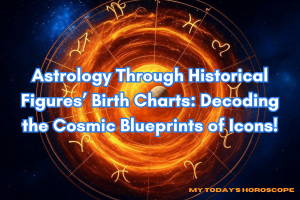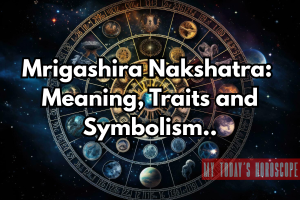In the intricate dance of the cosmos, astrological aspects are the invisible threads that connect the planets, weaving a tapestry of energies that shape our lives. Understanding these aspects is like learning the language of the stars, allowing us to decipher the celestial messages written in our birth charts. Whether you’re new to astrology or a seasoned stargazer, grasping the nature of aspects is essential to unlocking the full potential of your chart—and, by extension, your life.
As an astrologer with over twenty years of experience, I’ve come to see aspects as the heartbeat of a chart. They reveal how planetary energies interact, creating a unique symphony of influences that color our personalities, experiences, and life paths.
In this comprehensive guide, we’ll explore everything you need to know about aspects—from their fundamental definitions to their profound implications in natal charts, transits, and synastry. Along the way, I’ll share insights from my practice, historical perspectives, and practical tips for interpreting these cosmic connections.
What Are Aspects?
At their core, aspects are the angular relationships between planets in a birth chart, measured in degrees of the zodiac circle. These relationships determine how the energies of the planets interact with each other—whether they blend harmoniously, clash in tension, or create a dynamic balance. Think of aspects as the conversations between planets: some are like old friends sharing a laugh, others like rivals locked in debate, and still others like mentors offering guidance.
In a birth chart, aspects are calculated based on the positions of the planets at the exact moment of your birth. These connections form the backbone of your astrological profile, shaping everything from your emotional responses to your career choices. But aspects aren’t static—they also shift and evolve as planets move through the sky, influencing your life through transits and progressions.
The Major Aspects: Cosmic Conversations
While there are many aspects in astrology, five are considered major due to their powerful influence. These are the conjunction, opposition, trine, square, and sextile. Each has its own unique energy, ranging from harmonious to challenging, and understanding them is key to interpreting any chart.
Conjunction (0°)
A conjunction occurs when two planets are at the same degree of the zodiac, their energies merging into a single, potent force. It’s like two voices singing in unison—their combined strength amplifies their message, for better or worse. Depending on the planets involved, a conjunction can be harmonious or challenging.
- Harmonious Conjunction: Venus and Jupiter conjoining might bless you with charm, generosity, and a love of beauty. Imagine someone with an infectious laugh and a knack for making everyone feel special—that’s the Venus-Jupiter magic at work.
- Challenging Conjunction: Mars and Pluto together could fuel intense drive but also a tendency toward power struggles. This pairing can feel like a volcano—capable of both destruction and creation.
In my practice, I once worked with a client who had a tight Mars-Pluto conjunction in Scorpio in their chart. This aspect gave them incredible determination and resilience, like a phoenix rising from the ashes, but it also led to frequent power struggles in their relationships. Through our sessions, they learned to channel this energy into personal transformation, turning potential conflict into a catalyst for growth. It was a reminder that even the most intense aspects hold gifts if we’re willing to work with them.
Opposition (180°)
An opposition occurs when two planets are 180 degrees apart, standing directly across from each other in the zodiac. This aspect creates tension, like two forces pulling in opposite directions. It often manifests as a need to balance competing desires or external conflicts.
- Example: A Sun-Moon opposition might create an inner tug-of-war between your ego (Sun) and emotions (Moon), or between your public and private selves. You might shine brightly in the world but crave solitude to recharge.
Oppositions can feel like a seesaw—when one side is up, the other is down. But they also offer the potential for integration. I’ve seen clients with strong oppositions learn to harness this tension, finding a middle path that honors both energies. One client with a Venus-Neptune opposition struggled with idealized love versus reality but eventually found peace by embracing both romance and practicality in her relationships.
Trine (120°)
A trine occurs when two planets are 120 degrees apart, typically in the same element (fire, earth, air, or water). This aspect is harmonious, indicating ease, flow, and natural talent. It’s like two friends who effortlessly understand each other, finishing each other’s sentences without a hitch.
- Example: Mercury trine Jupiter might bless you with a gift for communication and a love of learning. Think of a storyteller who captivates a room with their wit and wisdom—that’s this aspect in action.
While trines are often seen as “lucky,” they can also lead to complacency if not consciously activated. In my experience, clients with many trines sometimes struggle to push themselves, as things come a bit too easily. I once advised a client with a Grand Trine in water signs to lean into their intuitive gifts rather than coasting on them, and the results were transformative.
Square (90°)
A square occurs when two planets are 90 degrees apart, creating friction and challenge. This aspect is like two forces at cross-purposes, pushing you to grow through conflict or obstacles. It’s the cosmic equivalent of sandpaper—rough, but it polishes you over time.
- Example: A Venus square Saturn might bring challenges in love or self-worth, but it also offers the potential for deep, lasting relationships built on resilience. You might face rejection early on, only to discover a strength you didn’t know you had.
Squares are often the aspects that propel us forward, forcing us to confront our limitations and evolve. I’ve seen clients with prominent squares turn their struggles into strengths, using the tension as fuel for personal development. One woman with a Moon square Uranus turned her restless emotions into a thriving career as an artist, channeling chaos into creativity.
Sextile (60°)
A sextile occurs when two planets are 60 degrees apart, indicating opportunities and potential. This aspect is harmonious but requires effort to unlock its gifts—it’s like a door that’s slightly ajar, waiting for you to push it open.
- Example: Mars sextile Uranus might offer opportunities for innovation and bold action, but you’ll need to seize them. Picture an inventor who spots a chance to break the mold and runs with it.
Sextiles are subtle but powerful when activated. In my readings, I often encourage clients to lean into their sextiles, as they represent untapped potential. A client with a Mercury sextile Neptune once told me they’d always loved writing but never pursued it—after our session, they started a blog that blended logic and imagination beautifully.
Minor Aspects: The Subtle Nuances
Beyond the major aspects, there are minor aspects that add depth and complexity to a chart. While they may not carry the same weight as the major ones, they can still influence your personality and experiences in meaningful ways.
- Semi-Sextile (30°): A subtle, sometimes awkward connection that can indicate minor irritations or adjustments. It’s like two neighbors who don’t quite get along but still share a fence.
- Quincunx (150°): Also known as the inconjunct, this aspect suggests a need for adaptation or compromise, often between incompatible energies. Imagine trying to mix oil and water—it takes effort.
- Semi-Square (45°) and Sesquiquadrate (135°): These aspects bring mild tension, similar to a square but less intense, like a nagging itch rather than a full-blown argument.
In my practice, I’ve found that minor aspects often reveal the “fine print” of a chart—small but telling details that can explain quirks or recurring themes in a person’s life. For example, a quincunx between the Sun and Neptune might manifest as a vague sense of dissatisfaction, pushing the individual to seek deeper spiritual meaning. One client with this aspect spent years feeling “off” without knowing why—once we identified it, they embraced meditation and found their center.
Aspect Patterns: Cosmic Blueprints
When three or more planets form a series of aspects, they create aspect patterns—complex configurations that can dominate a chart and shape a person’s life in profound ways. These patterns are like cosmic blueprints, outlining specific challenges, gifts, or life themes.
Grand Trine
A Grand Trine occurs when three planets form trines to each other, creating an equilateral triangle. This pattern indicates a natural flow of energy and talent, often in a specific element (e.g., a Fire Grand Trine might indicate creative genius).
- Potential Pitfall: The ease of a Grand Trine can lead to laziness if not consciously harnessed. It’s like being handed a golden ticket but forgetting to cash it in.
I once worked with a musician who had a Grand Trine in air signs—Mercury, Jupiter, and Uranus. His mind was a whirlwind of ideas, and he wrote songs that felt like they came from another dimension. But he admitted he’d procrastinated for years before owning his gifts.
T-Square
A T-Square involves two planets in opposition, both squaring a third planet (the “apex”). This pattern creates dynamic tension, often pushing the individual to achieve great things through overcoming obstacles.
- Example: A T-Square involving Mars, Saturn, and the Moon might indicate challenges with emotional expression and authority figures, but also the drive to master these areas.
The apex planet is the key—it’s where the tension resolves. A client with a T-Square involving Venus, Pluto, and the Sun channeled her intense relationships into a career as a couples’ therapist, using her struggles to help others.
Grand Cross
A Grand Cross consists of two oppositions forming a square, creating a cross in the chart. This is a high-tension pattern, often indicating a life filled with challenges but also immense potential for growth and achievement.
- Insight: I’ve worked with clients who have Grand Crosses and witnessed their incredible resilience. One client with a Grand Cross involving the Sun, Moon, Mars, and Saturn built a successful career in conflict resolution—her chart’s tension became her strength.
Aspect patterns are like the architecture of your chart, and understanding them can provide clarity on your life’s overarching themes. They’re not just lines on a page—they’re the story of your soul’s journey.
Aspects in Different Contexts
Aspects don’t just exist in isolation—they play out in various contexts, each with its own significance.
Natal Charts: Your Cosmic DNA
In a natal chart, aspects reveal your inherent traits, potentials, and challenges. They are the foundation of your personality and life path.
- Example: A Venus-Mars conjunction might indicate a passionate, charismatic nature—someone who lights up a room and loves fiercely. Meanwhile, a Mercury-Saturn square could suggest a cautious, methodical mind, prone to overthinking but capable of great focus.
Your natal aspects are like the ingredients in a recipe—how they blend determines the flavor of your life.
Transits: The Winds of Change
Transits occur when current planetary positions form aspects to your natal planets, triggering events, emotions, or shifts in your life. They’re the cosmic weather forecast, showing what’s blowing through your world.
- Example: When transiting Jupiter trines your natal Sun, you might experience a period of growth and opportunity—doors open, and confidence soars.
In my practice, I’ve seen how transits can act as catalysts. One client’s Saturn return (when transiting Saturn conjuncts natal Saturn) coincided with a career breakthrough after years of hard work. She’d built a solid foundation, and the transit pushed her to step into her power.
Synastry: Relationship Dynamics
In synastry, aspects between two people’s charts reveal the dynamics of their relationship—whether harmonious, challenging, or a mix of both.
- Example: A Moon-Venus trine between partners might indicate emotional harmony, like a couple who just “get” each other. A Mars-Saturn square, though, could suggest frustration or power struggles—think of two stubborn rams butting heads.
I’ve counseled many couples through synastry readings, helping them understand how their charts interact. One couple with a Sun-Moon conjunction found deep emotional resonance—they were each other’s home. Another with a Venus-Pluto opposition navigated intense passion and jealousy, but with awareness, they turned it into a bond that could weather any storm.
Orbs and Aspect Strength
Not all aspects are created equal—their strength depends on how exact they are, measured by orbs. An orb is the allowable degree of deviation from the exact aspect. For example, a conjunction with a 0° orb is exact, but it can still be influential with an orb of up to 8°.
- Tight Orbs: Aspects with small orbs (e.g., 0°-2°) are more powerful and noticeable. They’re like a spotlight shining directly on you.
- Wide Orbs: Aspects with larger orbs (e.g., 5°-8°) are weaker but still relevant, more like background music.
In my experience, tight aspects often manifest more dramatically. A client with a tight Sun-Uranus square (0° orb) lived a life of constant change and rebellion—she couldn’t sit still if she tried. Another with a wider square (6° orb) experienced similar themes but in a more muted way, like a gentle nudge rather than a shove.
Historical Perspectives: Aspects Through the Ages
The study of aspects dates back to ancient astrology, with early astrologers like Ptolemy classifying them into “benefic” and “malefic” categories. Trines and sextiles were seen as harmonious, blessings from the heavens, while squares and oppositions were challenging, tests to endure.
Modern astrology has evolved to view aspects more holistically, recognizing that even “difficult” aspects can be sources of growth and strength. In my own practice, I’ve embraced this nuanced view—after all, life’s challenges often lead to our greatest triumphs. A square isn’t a curse; it’s a call to rise.
Ptolemy’s work, like his Tetrabiblos, laid the groundwork, but today’s astrologers also consider psychological and evolutionary perspectives. Some even incorporate asteroids or midpoints into aspect analysis, adding layers of meaning. It’s a living tradition, and that’s what keeps me fascinated after all these years.
Conclusion: The Cosmic Symphony
Aspects are the dynamic interplay of planetary energies, the cosmic conversations that shape our lives. By learning to read these celestial dialogues, we gain profound insights into our strengths, challenges, and the unique path we’re meant to walk. Whether you’re exploring your natal chart, navigating transits, or understanding your relationships, aspects offer a roadmap to the stars—and to yourself.
In my two decades as an astrologer, I’ve seen how aspects illuminate the human experience. They’re not just abstract concepts—they’re the pulse of our stories, the rhythm of our growth. As the great astrologer Dane Rudhyar once said, “Astrology is a language. If you understand this language, the sky speaks to you.” Aspects are the grammar of that language, the structure that gives meaning to the planets’ messages.
So, take a moment to look at your chart. Listen to the whispers of the conjunctions, the debates of the oppositions, the melodies of the trines. They’re all there, waiting to guide you. May you find wisdom in their voices and courage in their lessons as you walk your starry path.






